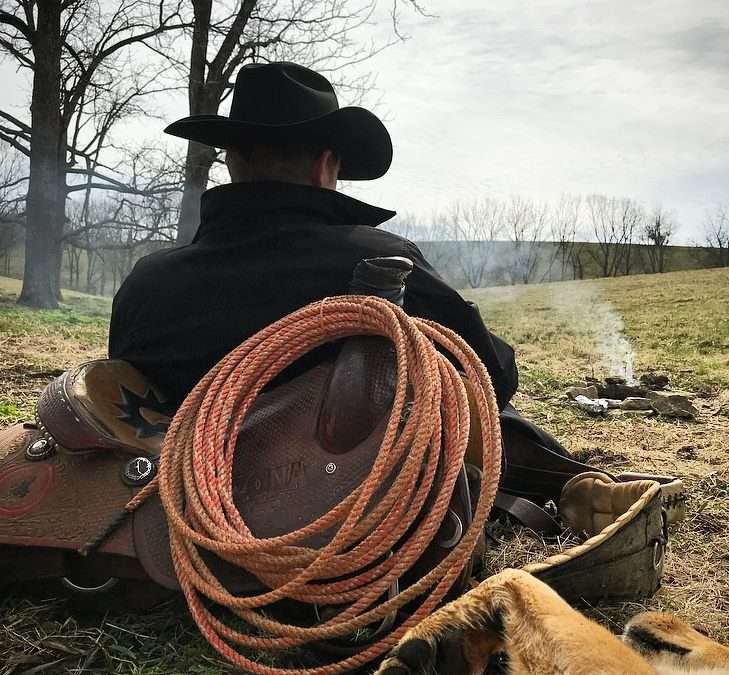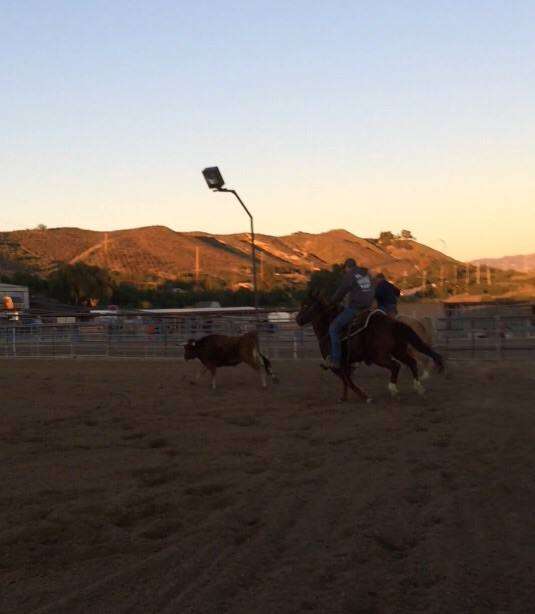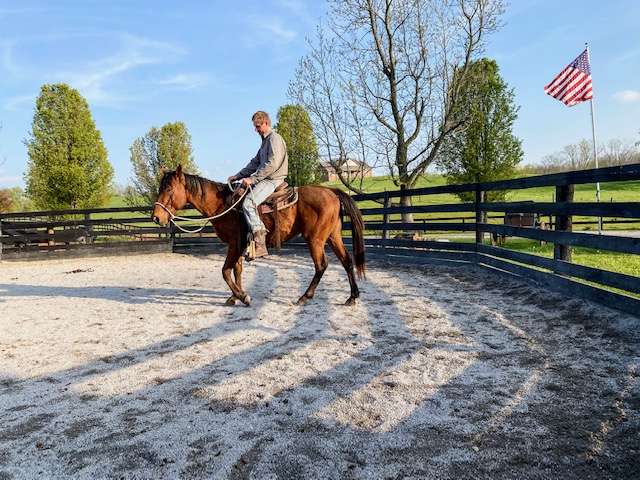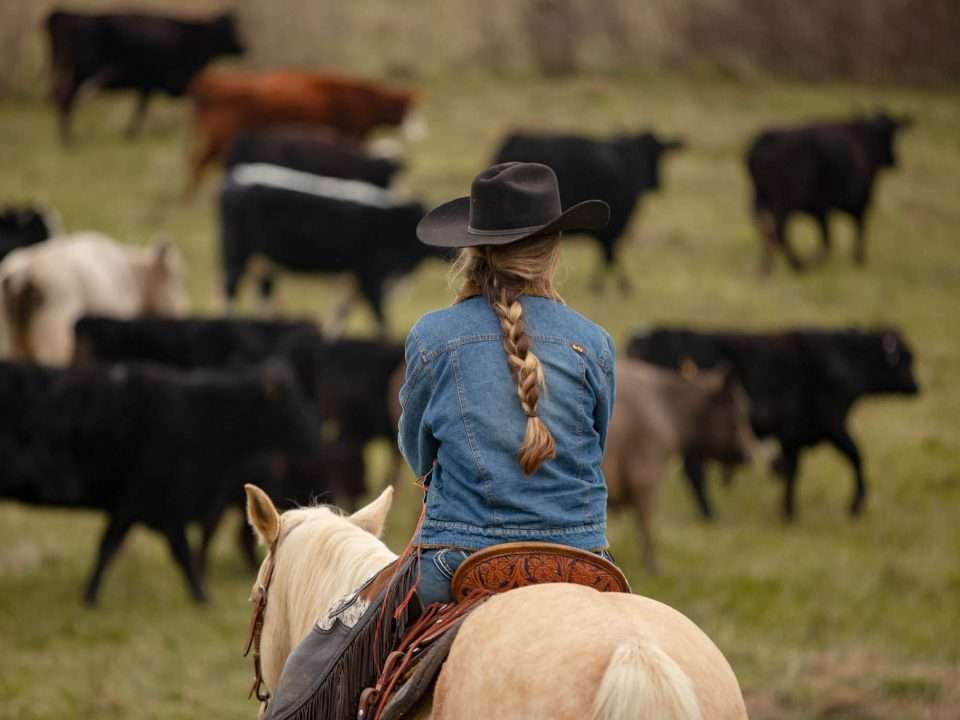All About the Rope

Round Pen and Arena Construction
March 12, 2021
Big Red- SOLD
March 14, 2021In the early summer of 2020, we started to host beginner roping clinics on top of our cattle clinics. As things slowed down here at Shadow Hills Ranch for the winter, several other facilities in the area began hosting their own roping and cattle clinics. The culture is growing and it is very exciting! The world of roping is a large and interesting world with many great opportunities. However, there are always going to be questions that new ropers will have, no matter where they learned to swing a rope. I hope to provide answers for as many questions as possible with this educational post!
As more and more clinics pop up across the Bluegrass, more and more people hit the internet and seek out ropes. As many of you may already know or recently learned, there are many many many types of ropes and each different rope is used for a different purpose. This leads to the first question, one we have received many messages about lately: what rope should I buy?
When it comes to selecting a rope, there are a few things you must consider: what you are using the rope for (purpose) is the first factor. The second would be what kind of physical build you are. You want a rope that you can easily manage and that will effectively accomplish your task. To even begin to answer this question, let’s explore the different types of ropes!
To keep things simple, there are four categories of ropes you most commonly see: Team Ropes (header), Team Ropes (Heeler), Ranch Ropes (working ropes) and Trick Ropes (ceremonial/show).
Team Ropes are usually broken down into two categories: head ropes and heel ropes. Sure, there are many rodeo ropes out there: calf ropes, goat ropes, breakaway ropes- but they all fall under the header or heeler category. The most common team rope is made of poly or nylon, or a mix of both. Poly is strong and can withstand high temperatures, which comes in handy when you dally and break left at a canter! Nylon has a nice stretch factor to it which in my opinion does not feel as stiff on the pull as poly, and obviously a mix of the two gives best of both worlds.
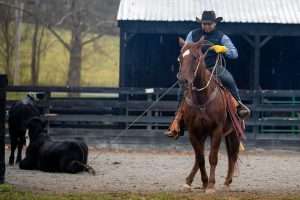
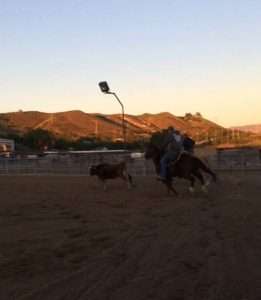
There are two primary differences between a Head rope and a Heel rope: length and lay. Head ropes are traditionally 30-32ft in length and are typically 3/8″ thick. Most head ropers prefer a softer feel or lay, giving the rope more “give”. Heel ropes are longer, generally 35-40ft in length and 3/8″ thick. Because heeling is setting a trap, heelers like a heavier lay (stiffness) which allows the rope to hold its shape more, so when you throw your loop it will stay open and allow to trap the heels when the cow runs into the trap. Sure, you can use a head rope to heel and a heel rope to head, this is just what you typically find in the roping arena and what team ropers generally throw. I have roped as a header and as a heeler in the arena, most of my rodeo time was heeling.
Ranch Ropes are very very different then Team Ropes. When you are a working cowboy, your rope is your greatest tool aside from your horse and knife. Your rope will see many different uses aside from just doctoring cattle, and will be catching more than just roping steers or smaller cattle: you may dally on a full grown bull or a thousand pound cow. Thus, the ropes need to be strong and they need to be versatile. One thing I will say though is ranch rope styles/material/lays vary depending on where in the United States you are!
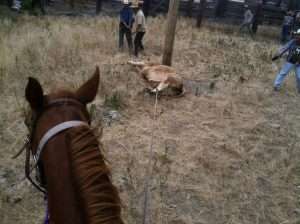

Materials vary, you most commonly see poly, nylon, rawhide riatas. Out west we threw soft lay braided nylon ropes, my preferred length was (and still is) 60ft. Still 3/8″ thick, the braided nylon with a soft lay had a lot of give to it, making the rope insanely versitile no matter the job. You could tie knots for any job and untie easy (utility rope), you could make long throws with ease due to the weight and length (cattle roping), and you had enough lay to catch head, heels, or figure-8 head and heels with practice; but not enough stiffness to throw, miss, and run right into your own trap as many starting heelers do! I have used poly ranch ropes before, generally 4-strand poly, but I personally did not like the feel. They felt like a team rope but twice the length, and were lighter, which in the wind had disadvantages especially with longer throws. Rawhide Riatas were popular among the Californios style ranchers, towards Santa Barbara. A good friend and great trainer of mine David Jeffers preferred the rawhide for feel and for strength. He would explain it as a nylon rope on steroids; they are extremely rugged, they last forever (if treated properly), and could be thrown further with less energy due to the way they hold shape and the weight.
Trick Ropes are exactly as the word sounds: they are used for tricks and stunts. The most common example would be the simple flat loop spin, where the roper makes the rope hold a flat loop for as long as they desire.
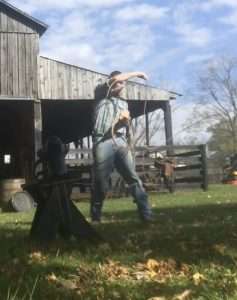
Trick ropes are always soft lay and limp feeling, and traditionally run in two lengths: 15′ and 20′. Practice ropes are generally cut to custom lengths for ease of learning. If you are buying a trick rope, it is because you want to become Will Rogers in The Ropin’ Fool!
The next topic of discussion is the Hondo.
There are three main types of hondos: metal, rawhide, and rope. I am not going to include plastic hondos as they are used mainly for breakaway and practice, a topic that will be discussed later! Lets discuss each hondo type.
Metal hondos vary in material, some are brass some are steel, depending where in the United States you are. The most common you will see is steel, which you will find in many round pens and branding pens across the country. The advantage of a steel hondo is the ability to loosen your loop once it is on target as well as fast loop build since the rope slides easy through metal. By this I mean you can loosen the grip of the rope from around whatever it is you were roping. Horse trainers love metal hondos for that reason, once you rope the horse you can control pressure and not risk the loop locking out and choking the horse. Cowboys and cowgirls in the branding pens like metal hondos also as they can rope and drag the calf to the fire and easily release the calf.
Rawhide hondos are becoming more and more popular lately as they last a long time, they are light, and they are strong. Most ropes you see with rawhide hondos are those with rawhide burners, which is a rope that has rawhide laced to it around the hondo. They are also a good choice for those roping horses as they are light and will not hit as hard as certain throws with metal hondos. They do hold grip though, so be mindful!
Rope hondos are exactly as they sound- the hondo is simply a knot in the rope. More times than “knot” (funny, right?) you will see rope hondos with a burner of some kind, commonly rawhide. The same description as rawhide can be inserted to describe rope hondos since they go hand in hand mostly. However, for those who make improvised ropes, a few hours of practice with knot tying and you can turn anything into a livestock ready rope! Bowline or figure-8-on-a-bite make great hondos when tied compact.
The final subject to discuss is lay.
The lay of a rope is just another term for the softness of a rope. The softer the lay, the less stiff. It is simple! When looking for a rope, you will see likely the following lays: XS, S, MS, M, MH, H. These stand for Extra Soft (limp), Soft (will hold shape kind of), Medium Soft (Holds more shape than S), Medium (decently stiff), Medium Heavy (hard to bend stiffness), Heavy. Most beginner ropers should opt for a softer lay as they are more forgiving and easier to swing. Heavier lays require more perfection of skill and different techniques to throw.
That about covers the basics for ropes! Lets move into some common questions:
I went to a roping clinic, took a lesson, or watched a Youtube video: now what?
Throwing a rope is easy, as any clinic or lesson will show you. You flip the loop with your wrist, you swing the rope around your body, you reset the loop with your wrist and either repeat to swing or let go to throw. Once the basics are understood and you can effectively throw a loop, the only benefit a clinic/lesson will give you is instant feedback and troubleshooting. Bad habits can be fixed fast and good habits can be reinforced. At the end of the day though, your roping journey is entirely dependent on how many loops you throw. Yes there are bad habits, however if you are catching with every swing and your form is not the prettiest, who cares? The point is to catch with the least amount of throws, preferably every throw. If you can manage your coils efficiently and can create/throw a loop well, there is not much need for clinics/lessons and there is much more need for more practice and testing your abilities!
Do I need a roping dummy to practice?
No you do not. The best advice I can give you is to rope anything and everything. Fence posts, hay bales, buckets, chickens, goats, dog, horses, everything. The reason is great, you can throw a rope. You have to be able to judge distances, speeds, how far to lead a target, how big a loop you need- the list continues. To be a proficient roper you have to be able to rope any target, no matter the size, speed, or direction. That skill takes time to develop and the best way to start developing is by roping everything you can. A roping dummy is an excellent target to practice catching horns or heels however (aspiring team ropers, I’m talking to you!)
Should I practice on my horse?
We get asked this question a lot, and the answer is always the same. Roping is something you do off of your horse, while your horse gets you into position and sets up the shot. That being said, it is a delicate process to teach a horse to properly be roped off of. The best advice I can give you as a trainer is to become proficient with your throws long before you even look at your horse. Once you sit in the saddle, you have a lot to work on: first you must help your horse get used to working cattle and getting in proper position depending on the objective. Second, anything on horseback involving cattle is a dynamic situation. The last thing on your mind should be “am I throwing the rope correctly”, you should be confident in your swing and throw before trying on horse. Lastly, swinging a rope on a horse is dangerous. Just because you get away with it does not mean your horse is rope savvy. Take the time now, when you too are learning, to get your horse used to the rope hitting every single inch of their body, face, feet, and so on. Introduce the rope, drop the rope, swing the rope at different speeds to get different noise. All too often you see novice ropers fall or get hurt, or hurt their horse, due to the horse spooking or not being properly introduced to the rope. Take your time and do it right, it will save time down the road.
What is better, live cattle or a dummy for practice?
If you are a proficient roper, you are confident in your swing, you have taken the time to introduce the rope to your horse: there is no better practice than the real thing. That goes for many things: fire service, medicine, firearms, horses, and especially roping. tracking a dummy helps get your horse set up and get you confident in your positioning, but catching live cattle will ultimately make you a better roper. Think of it this way: Heel-O-Matics are a relatively new idea in terms of history. They can be a great tool but they can be a crutch if relied on. Live cattle will always test you because every cow is different and not every run, team roping or ranch roping, is the same. They will duck/dodge your throws, they will skip the rope, they will stop or turn if you let them- there is much more to roping than just throwing. You have to start somewhere though!
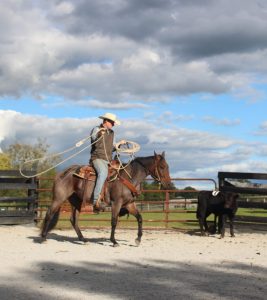
This is where Breakaway Hondos come in. With a breakaway hondo, you can throw on live cattle, practice your dally, and the rope will free itself. They are great for repeat runs over and over again, excellent for dally practice since they will almost always release, and allow the roper to really get a feel for making the catch without having to stop each throw and release the cow.
What kind of rope do you use?
I have switched back and forth many times in terms of brand, but I will say that if I was to refer anyone to a particular company it would be King Ropes out of Wyoming. They are absolutely made by cowboys, for cowboys. I throw a braided nylon king rope currently as my go-to for everyday work. In the branding pens, I do use an old heel rope, brand does not matter, because it gets abused and drags a lot of calves. What matters most is finding a rope that works for YOU. Hellena had a King Ropes working rope until she discovered 3:10 Ranch Ropes and has not looked back since. If you would like to browse them, this is the link: https://www.kingssaddlery.com/index.htm. Just because one person uses a particular rope does not mean you will like it. Try as many as you can, buy used in the beginning, and figure out why you need a rope, what you are going to use it for, and decide from there. If you are looking for a practice rope while deciding what roping style to pursue, get yourself a 30ft 3/8″ Soft lay rope. Waxed, not waxed, poly, does not matter. It is something for you to throw and swing while you get better. We do sell used team and ranch ropes here at Shadow Hills Ranch and on our website if you are looking for a local source. Boss Mare Tack in Lexington has a selection as well, Alex herself was a penrider and roped quite a bit she will point you in the right direction.
I hope this is helpful to all you beginning or intermediate ropers out there! If you have any questions, as always send us a message or give us a call! We are happy to help in any way we can!


